
Welcome to CivilGEO Knowledge Base
Welcome to CivilGEO Knowledge Base

Welcome to CivilGEO Knowledge Base
Welcome to CivilGEO Knowledge Base
The Stamp Multiple command allows the user to perform bulk stamp geometry operations. Similar to the Stamp Geometry command, this command allows the user to define multiple stamp geometry operations to be applied at one time to the terrain surface. This allows the stamp terrain modifications to be defined before applying the changes to the terrain. To learn more about Stamp Geometry command, refer to this article in our knowledge base.
The Stamp Multiple command is helpful in situations where the user may need to edit the terrain surface multiple times—especially when working with large DEM files where stamping one feature causes the entire terrain surface to be recreated each time.
The command supports various options for defining the stamping operation, including:
The user can specify the merge order of the stamp operations, which will determine the stamp order of the composite terrain surface. In addition, the user can edit and modify the defined stamp geometry entities so that an iterative, trial and error approach can be used in constructing the updated terrain surface.
For example, the below image shows three false dams in the running ditch that need to be removed. The Stamp Multiple command can be used to remove all three false dams simultaneously.
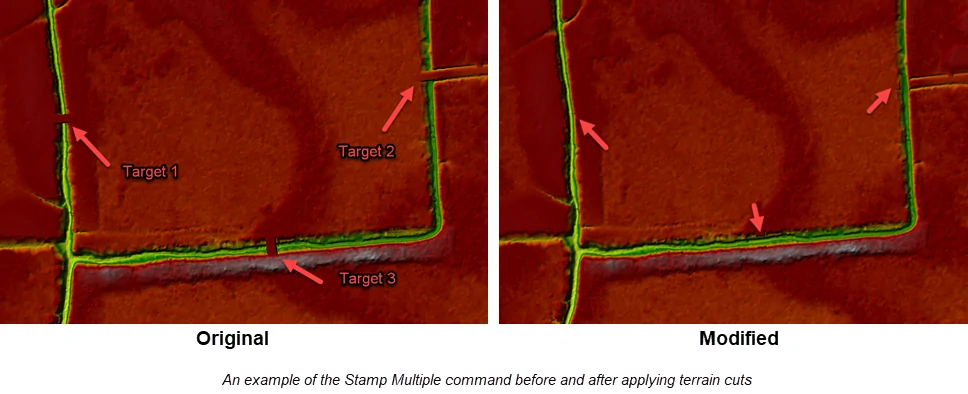 To use the Stamp Multiple command, follow the steps below:
To use the Stamp Multiple command, follow the steps below:
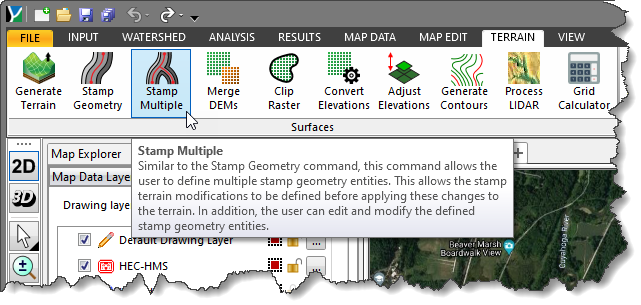
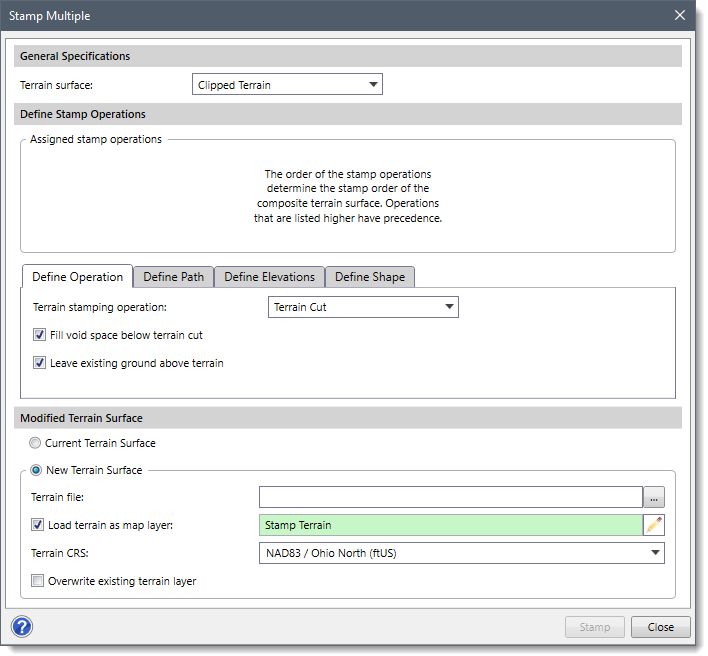
The following sections describe how to use the Stamp Multiple command and interact with the above dialog box.
From the Terrain surface dropdown combo box, the user can select a source terrain file from the existing elevation layers within the current project. The elevation layer which is used in extracting cross sections and 2D model elevation data is selected by default.
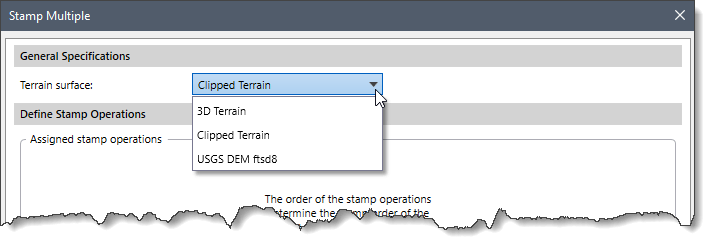
This section presents a table summarizing the assigned stamp operations. This table appears after the user has defined the terrain interpolation path so that multiple stamp operations can be displayed.
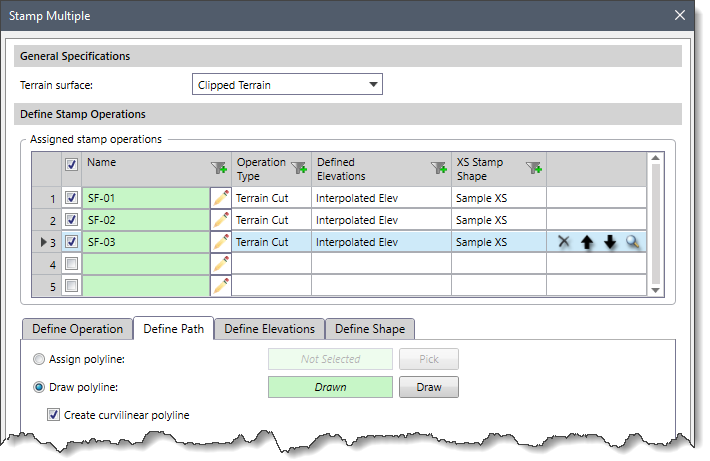 This Assigned stamp operations table displays the list of stamp operations assigned. This table includes the Name, Operation Type, Defined Elevations, and XS Stamp Shape of the assigned stamp operations. In the first column, the user can change the name by clicking on the pencil icon and checking the appropriate checkboxes required for an operation. The last column allows the user to delete, move up/down, or zoom to a particular stamp operation. The user can add additional stamp operations by selecting the next row. The type, elevation, and shape of the corresponding stamp operation can be defined using the following sections:
This Assigned stamp operations table displays the list of stamp operations assigned. This table includes the Name, Operation Type, Defined Elevations, and XS Stamp Shape of the assigned stamp operations. In the first column, the user can change the name by clicking on the pencil icon and checking the appropriate checkboxes required for an operation. The last column allows the user to delete, move up/down, or zoom to a particular stamp operation. The user can add additional stamp operations by selecting the next row. The type, elevation, and shape of the corresponding stamp operation can be defined using the following sections:
This section defines the general parameters used to stamp terrain geometry and the type of stamping operation.
 From the Terrain stamping operation dropdown combo box, select the type of stamping operation. The following options are available:
From the Terrain stamping operation dropdown combo box, select the type of stamping operation. The following options are available:
Note that the Fill void space below terrain cut and the Leave existing ground above terrain checkboxes are checked by default. They facilitate creating a more accurate representation of the stamped terrain geometry by daylighting the stamping operation into the source terrain geometry.
This section defines the path to which the terrain surface stamping is to be applied.
There are two options for defining the path:
If there is an existing polyline on the Map View that can be used for the stamping operation, the user can click the [Pick] button adjacent to the Assign polyline radio button and select a polyline from the Map View.
![Define Path - [Pick] button](/wp-content/uploads/sites/25/2023/03/Stamp-Multiple-Command-Imge-7.png) Alternatively, the user can click the [Draw] button adjacent to the Draw polyline radio button to draw a polyline on the Map View.
Alternatively, the user can click the [Draw] button adjacent to the Draw polyline radio button to draw a polyline on the Map View.
![Define Path - [[Draw] button](/wp-content/uploads/sites/25/2023/03/Stamp-Multiple-Command-Imge-8.png) The Create curvilinear polyline checkbox can be used to create a smooth terrain interpolation path while drawing the polyline.
The Create curvilinear polyline checkbox can be used to create a smooth terrain interpolation path while drawing the polyline.
This section defines how the interpolated terrain elevations will be assigned along the polyline path.
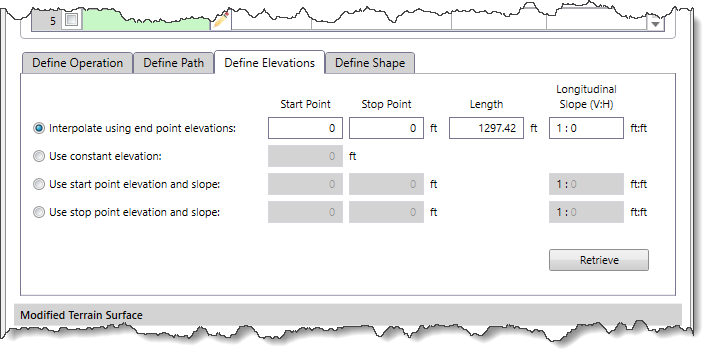 There are four radio button options for defining how the elevations are assigned:
There are four radio button options for defining how the elevations are assigned:
The user can first click the [Retrieve] button to automatically extract the start and end elevation values, length, and slope data for the selected polyline and then choose any of the above options to define the way elevations will be interpolated along polyline paths.
This section defines how the interpolated terrain region will be shaped along the polyline path. There are two options for defining the interpolation path shape. The user can either choose the Use end point terrain geometry or the Use trapezoid geometry option.
![Define Shape - [Pick] button](/wp-content/uploads/sites/25/2023/03/Stamp-Multiple-Command-Imge-10.png)
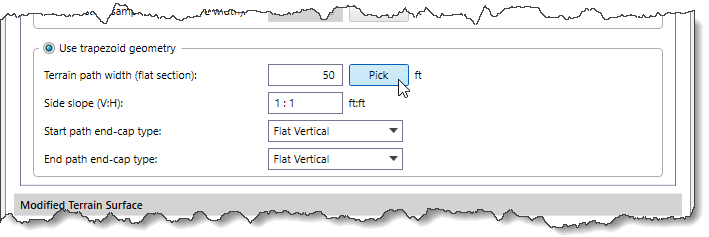 The Side slope (V:H) ratio value is set to 1:1 by default, which corresponds to a 1 ft (m) rise to a 1 ft (m) run. A ratio of 1:0 represents a vertical wall. However, many times a flatter slope is required, such as 1:2 or 1:3. The user can define the ratio to represent the slope.
The Side slope (V:H) ratio value is set to 1:1 by default, which corresponds to a 1 ft (m) rise to a 1 ft (m) run. A ratio of 1:0 represents a vertical wall. However, many times a flatter slope is required, such as 1:2 or 1:3. The user can define the ratio to represent the slope.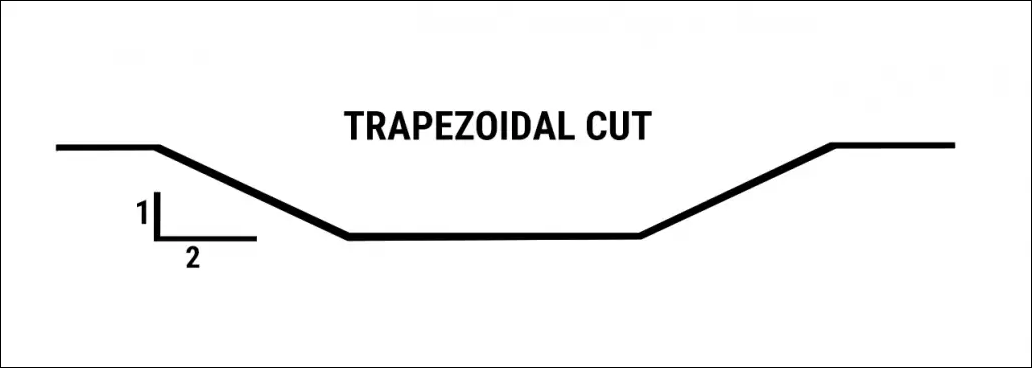
The Start path end-cap type and End path end-cap type dropdown combo boxes allow the user to choose different end cap styles from the following options:
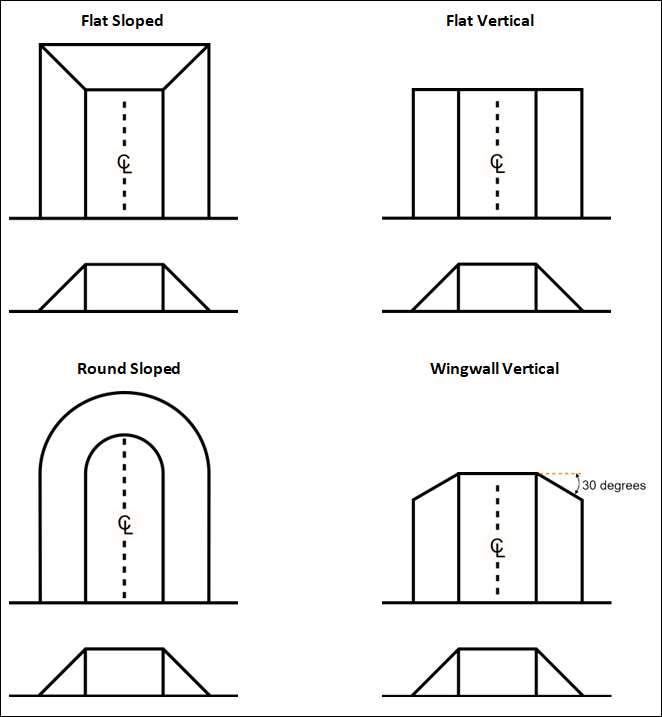
This section is used to define the specifications of the revised terrain grid.
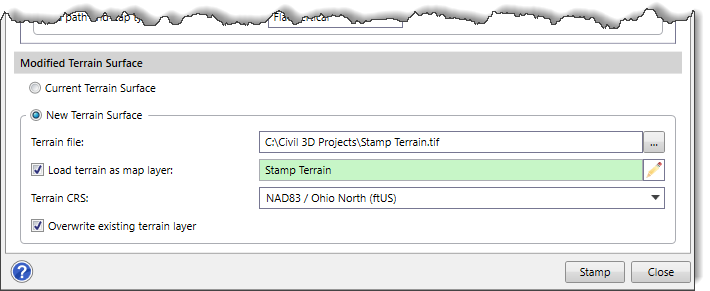
After the options for stamping the terrain geometry have been defined, click the [Stamp] button and the software will generate the revised terrain grid with multiple terrain stamping. In addition, the software loaded the DEM file as a new layer in the Map Data Layers panel.
 1-800-301-02-955
1-800-301-02-955
 608-729-5100
608-729-5100
(US and Canada)
 [email protected]
[email protected]
 +1 608-729-5100
+1 608-729-5100
CivilGEO India
Graphix Tower, A-13 A
3rd Floor, Sector 62
Noida, Uttar Pradesh 201309
IndiaTel:
1-800-301-02-955 or
+91 022-3831-8601
CivilGEO United States
8383 Greenway Blvd
6th Floor
Middleton, WI 53562
USATel:
608-729-5100 or
800-488-4110
Copyright © CivilGEO, Inc. All rights reserved. The CivilGEO logo, “GeoHECHMS”, “GeoHECRAS”, and “Ready To Engineer” are registered trademarks of CivilGEO,
Inc. All other brands, company names, product names or trademarks belong to their respective holders.
We use cookies to give you the best online experience. By agreeing you accept the use of cookies in accordance with our cookie policy.
When you visit any web site, it may store or retrieve information on your browser, mostly in the form of cookies. Control your personal Cookie Services here.
The ZoomInfo WebSights snippet drops three cookies to track Unique Visits:
1. _pxhd - Related to the Perimeter X security layer (Perimeter X isused to prevent bot attacks).
2. _cfduid - Related to the CloudFlare security layer (CloudFlare is the Network Security protocol that ZoomInfo uses to orchestrate the rate limiting rules).
3. visitorId - This is how WebSights identifies recurring visitors








